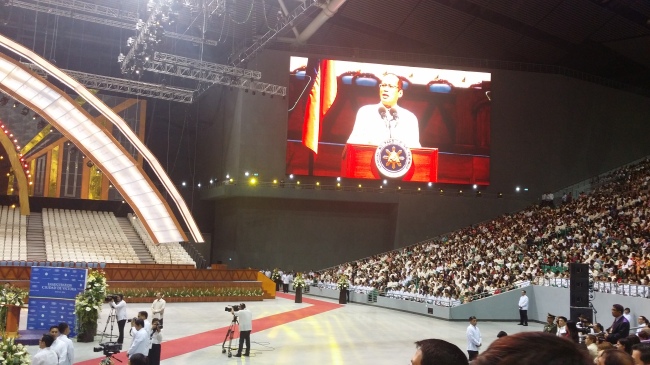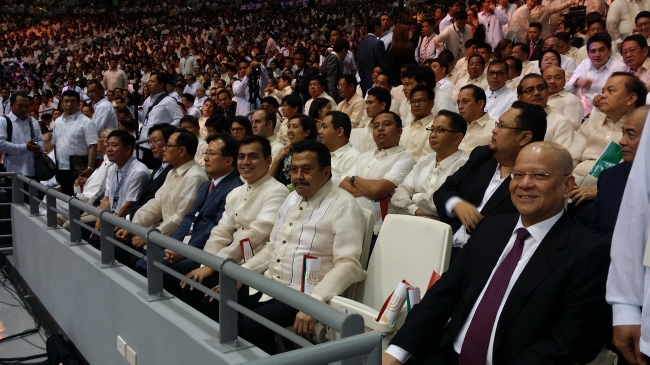
Hanwha Engineering and Construction Corp. on Monday celebrated the completion of the Philippines Arena, the world’s largest domed arena, in the Philippines.
The ceremony was attended by some 60,000 people including Philippines President Benigno Simeon Cojuangco Aquino III, former President Joseph Ejercito Estrada and Hanwha E&C president and CEO Lee Keun-po.
Located near the capital Manila, the Philippines Arena has 51,000 seats and a 36,000-square-meter roof.
The ceremony was attended by some 60,000 people including Philippines President Benigno Simeon Cojuangco Aquino III, former President Joseph Ejercito Estrada and Hanwha E&C president and CEO Lee Keun-po.
Located near the capital Manila, the Philippines Arena has 51,000 seats and a 36,000-square-meter roof.

“We greatly appreciated Hanwha’s efforts in constructing the Philippines Arena and expect Hanwha to become even more involved in our future construction projects,” said Eduardo V. Manalo, executive minister of INC, a Filipino Christian foundation that commissioned Hanwha for the project.
Hanwha E&C, one of the world’s largest construction firms, won the $175 million contract to build the arena over rivals including China’s Jiangsu International and the Philippines’ EEI Corp.
INC officials said the facility was originally planned to be used for religious purposes, but was later designed to fit the needs of large sports events.
The building was designed in such a way as to accommodate the unique geographical traits of the Philippines including its frequent seismic and volcanic activities.
The roof and the body of the building, for instance, were built to move separately during earthquakes to become more motion-resistant.
“The arena was designed with earthquake-resistant technologies to endure both big and small earthquakes, including quakes of magnitudes of up to 7.5 on the Richter scale,” Hanhwa officials said.
Hanwha’s work was also recognized at home. On July 2, Lee Dae-sool, the arena’s on-site manager, received an award from Korea’s minister of land, infrastructure and transport for enhancing the country’s image abroad, and for contributing to the global and local construction industries.
By Suk Gee-hyun (monicasuk@heraldcorp.com)






![[Weekender] How DDP emerged as an icon of Seoul](http://res.heraldm.com/phpwas/restmb_idxmake.php?idx=644&simg=/content/image/2024/04/25/20240425050915_0.jpg&u=)




![[KH Explains] No more 'Michael' at Kakao Games](http://res.heraldm.com/phpwas/restmb_idxmake.php?idx=644&simg=/content/image/2024/04/28/20240428050183_0.jpg&u=20240428180321)





![[Herald Interview] Mistakes turn into blessings in street performance, director says](http://res.heraldm.com/phpwas/restmb_idxmake.php?idx=652&simg=/content/image/2024/04/28/20240428050150_0.jpg&u=20240428174656)
